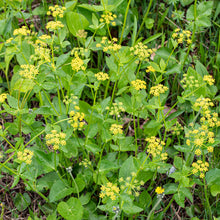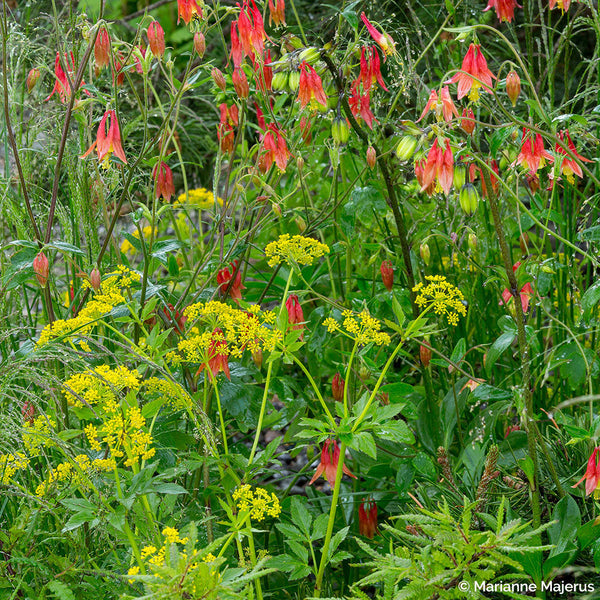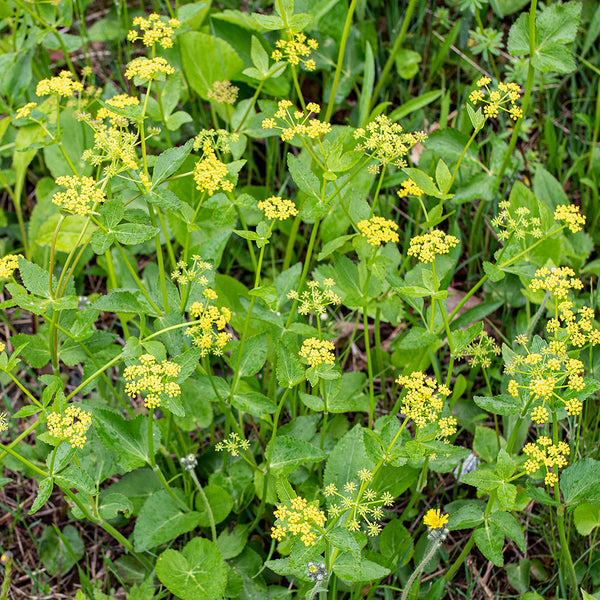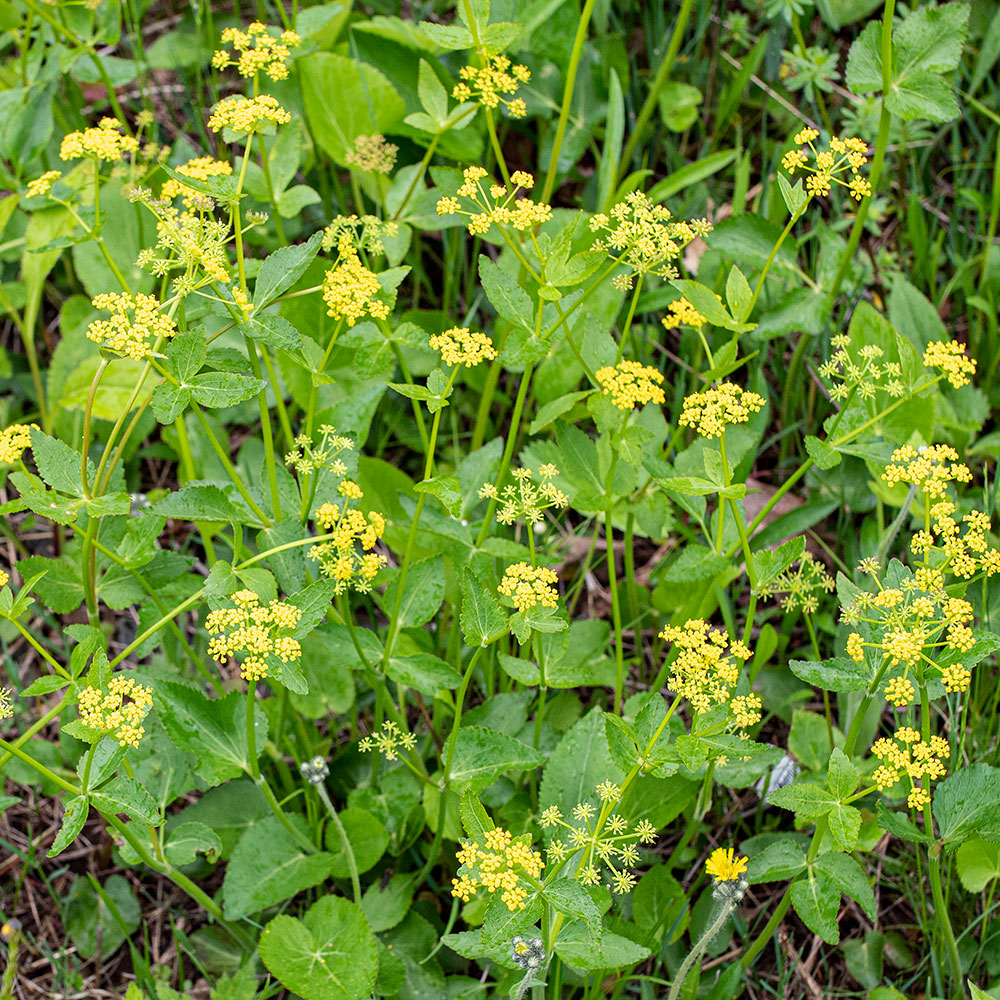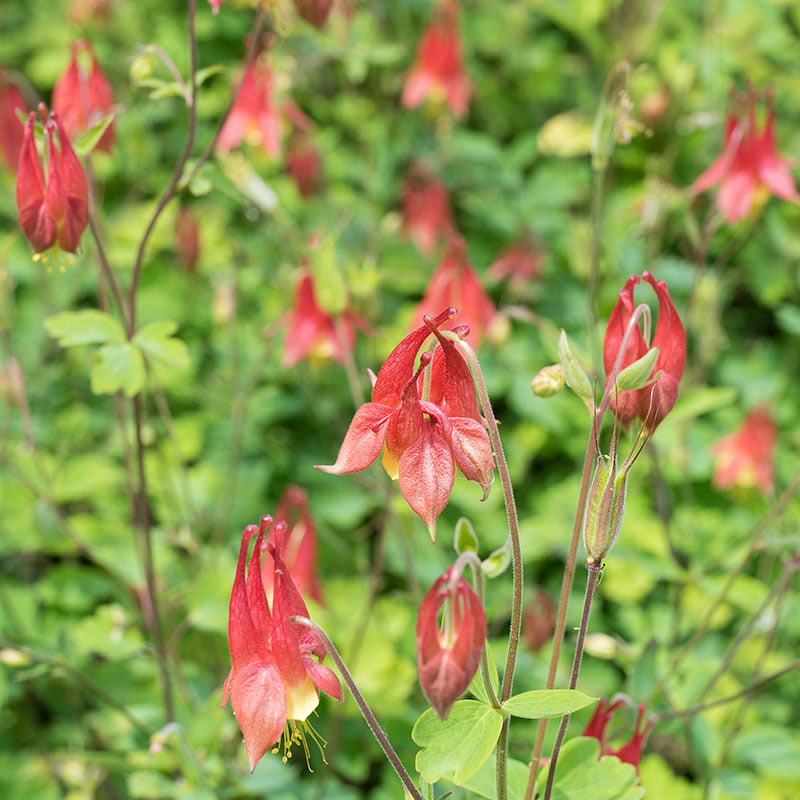SOWING INSTRUCTIONS
Starting Indoors:
Stratify for 30-60 days. Sow in a container, cover with a plastic bag and refrigerate, or mix seed with damp clean sand or vermiculite, bag, and refrigerate at 35-40°F. Check often for germination and maintain a lightly moist medium. Transplant any seedlings as they germinate. After the chill period, sow into soilless media and keep at 65-75°F.
Starting Outdoors:
Direct sow in fall or winter sow into pots in the shade, covered with a thin layer of clean sand and a wire screen to keep out mice and voles. Check for water as needed.
PLACEMENT & CULTIVATION
Golden Alexander is best in rain gardens, native gardens, on the edges of woodland areas, and carpeting sun-dappled banks. It self-sows to create large drifts of sunny yellow flowers and shiny green foliage and flowers in spring. After bloom the seed heads turn a purplish hue and add interest to later summer gardens. Soils can be moisture holding or very well-drained, as long as spring rains are plentiful. A plant host to the caterpillars of the black swallowtail butterfly, they also support specialist bees, bumblebees and beneficial insects and provide nesting sites.
Watering Details:
Keep moist but avoid saturated soils. Do not allow soil to dry out between waterings.
Fertilizer:
Mix in a couple of inches of compost prior to planting.
When to Cut for Bouquets:
Cut when about 3/4 of the florets have started to open.
































